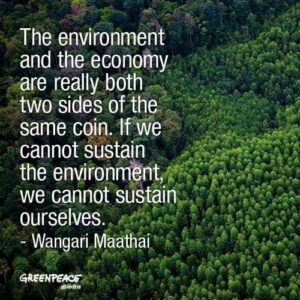Environmental justice, defined as having equal and open access to shape environmental protections, policies, and benefits that impact our communities, has never been a reality for people of color. In fact, it has been quite the opposite: virtually all environmental injustice in this country has been fueled by the patterns of racism and class that have existed in the United States since its founding.
It is well documented that the most marginalized communities are also the areas where waste has been stored, industrial warehouses and facilities are concentrated, and where natural resources have been exploited – by both official legislation and unofficial custom. Corporations, regulatory agencies, and local planning and zoning boards consistently target low-income communities of color when determining where to locate landfills, waste transfer stations, incinerators, garbage dumps, diesel bus and truck garages, auto body shops, smokestack industries, industrial hog and chicken processors, oil refineries, chemical manufacturers, and radioactive waste storage areas.
The environmental justice movement began in 1978 in North Carolina when that state decided to store 6,000 truckloads of soil laced with toxic PCBs in rural, poor, and overwhelmingly Black Warren County. There are countless additional examples of environmental injustices: the fifth district of Saint James Parish in Louisiana is infamously known as “Cancer Alley”; since 2014 thousands of Black children in Flint, Michigan, have been exposed to drinking water with elevated levels of lead; and in Lowndes County, Alabama, residents live with raw sewage because basic sanitation is not affordable. Studies reveal that Black people are 75% more likely to live near oil and gas refineries, leading to higher risks of premature death from power plant pollution.
While the adage “disasters don’t discriminate” may be true, we know that bad policy does. If companies are not held responsible for the pollution they cause and the government does not act to protect all citizens, we will likely have a multitude of irreversible environmental crises throughout the nation that threaten the lives of future generations.
The environmental justice movement seeks to empower disenfranchised communities to organize and get involved in decision-making processes. The physical and natural environments cannot be separated from the cultural environments which we traverse, to work, play, and and steward our most precious resources – our families.
All forms of justice must be integrated throughout all that we do. We must support organizations fighting for environmental, racial, and political justice to create a sustainable planet for us all.
“No community should be saddled with more environmental burdens and less environmental benefits than any other”.
-Majora Carter

- Empower People To Power Our Planet - April 23, 2025
- April is Genocide Awareness Month—a time of remembrance, reflection, and responsibility. - April 15, 2025
- CARE FOR THE CAREGIVER - March 21, 2025
Empower People To Power Our Planet
April 23, 2025
“If every day were Earth Day, we wouldn’t be in the mess we’re in.”— Neil deGrasse Tyson Earth Day 2025 is April 22nd, and it raises…
April is Genocide Awareness Month—a time of remembrance, reflection, and responsibility.
April 15, 2025
This month was chosen because several of history’s most devastating genocides began or are commemorated in April, including the Armenian…